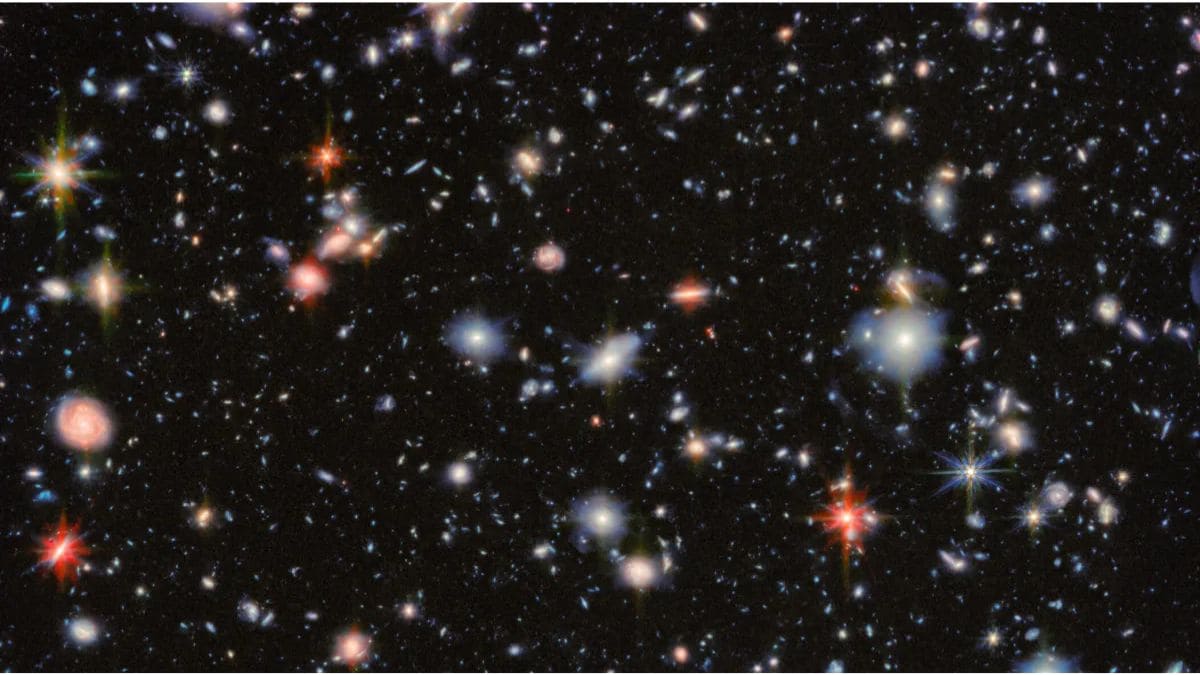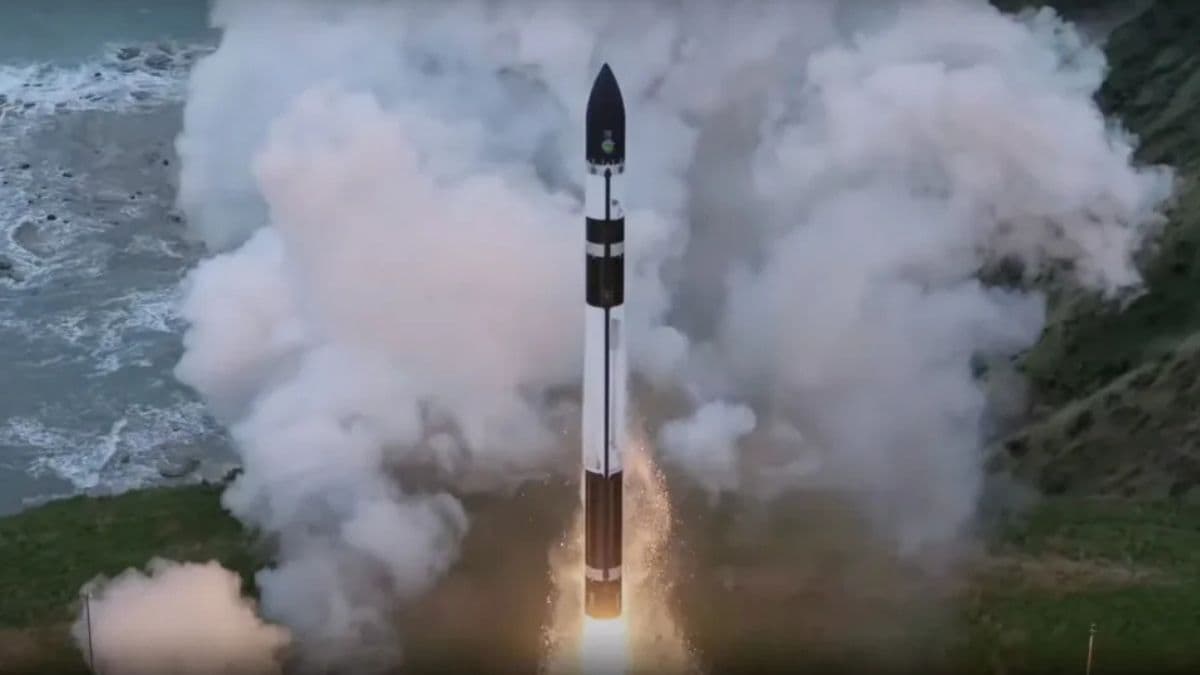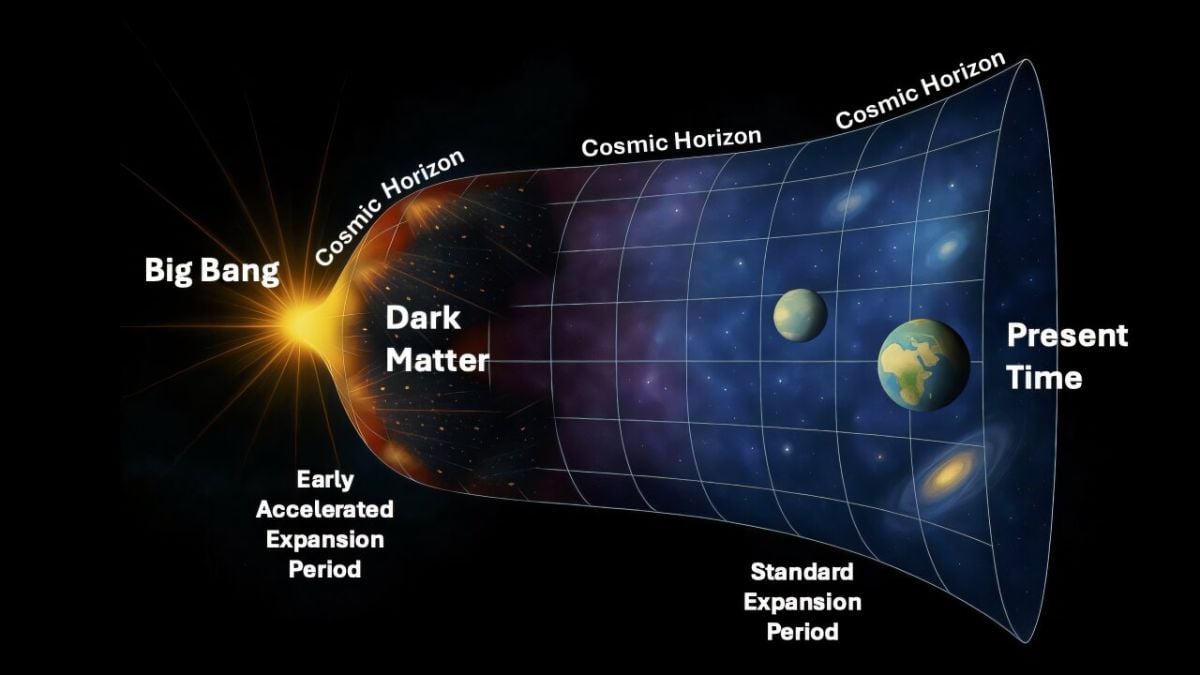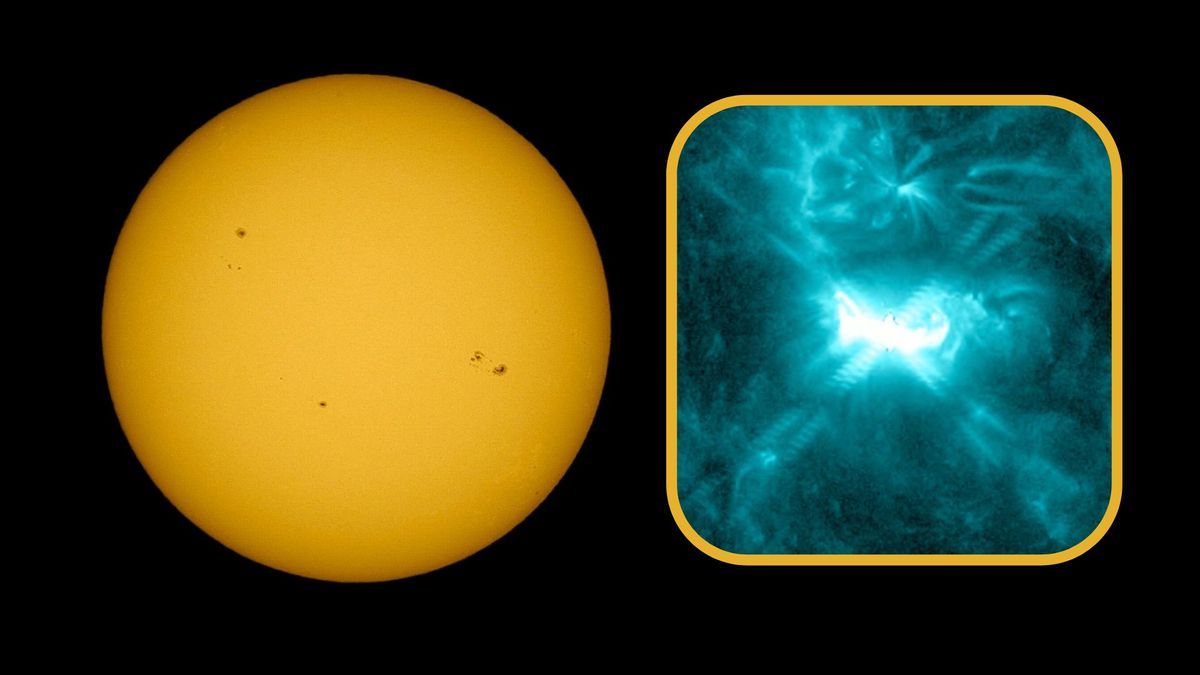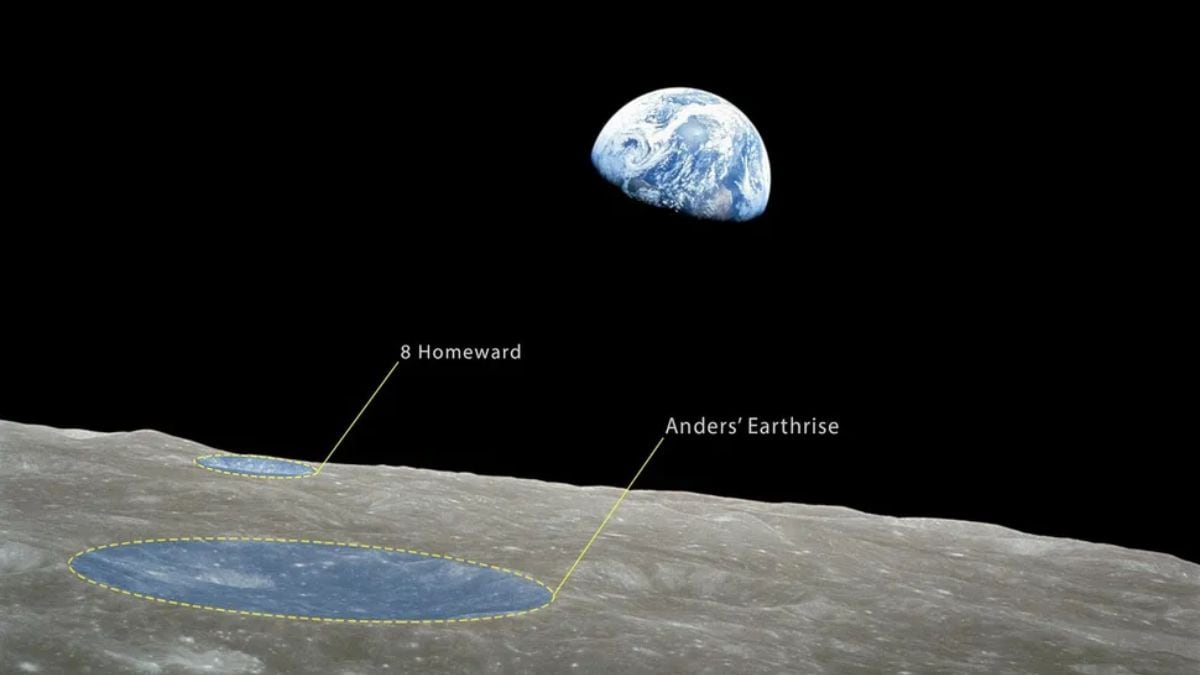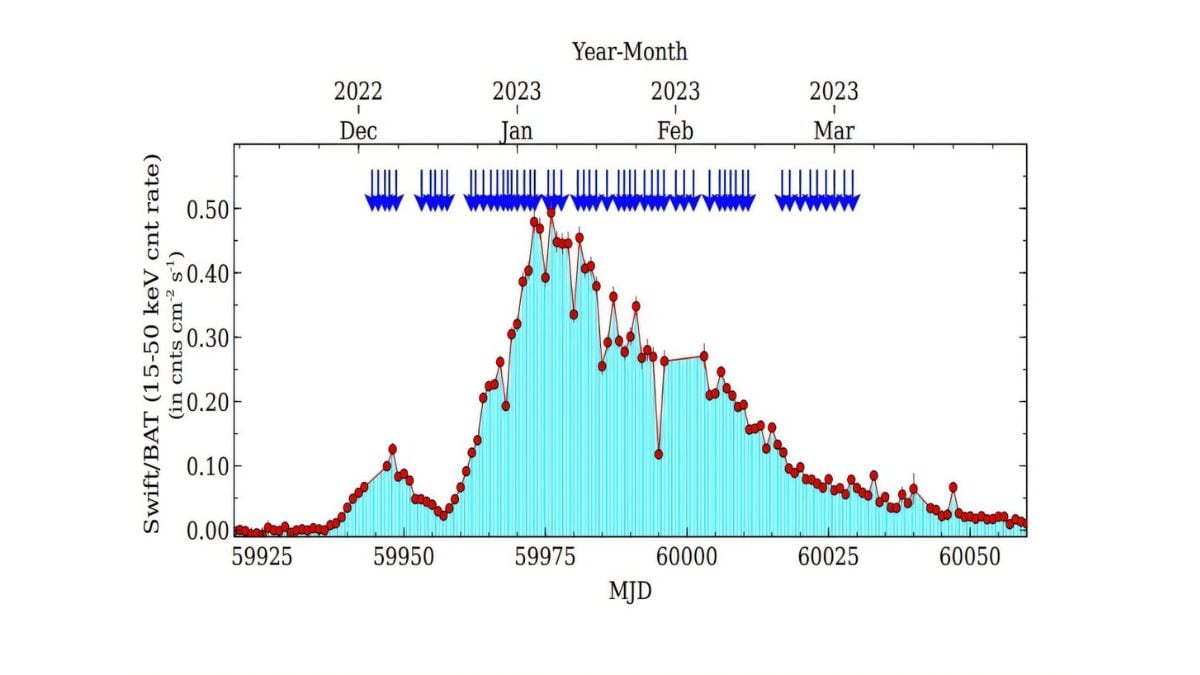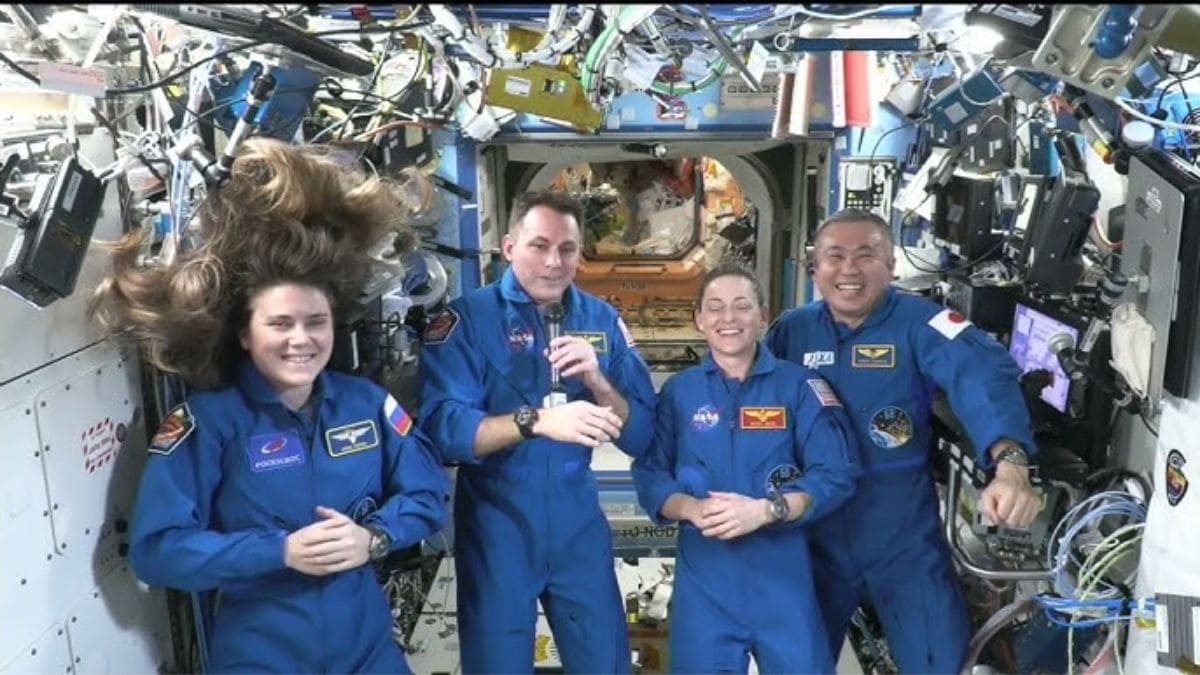The James Webb Space Telescope (JWST) has returned to Hubble’s Ultra Deep Field, capturing over 2,500 galaxies across cosmic history. It is part of JWST’s JADES survey, re-imaging the same patch in infrared. Webb’s infrared cameras (NIRCam and MIRI) see much fainter objects than Hubble. While Hubble’s UDF showed about 10,000 galaxies in visible light, Webb’s extremely deep (~100-hour) mid-infrared exposure now reveals galaxies formed just a few hundred million years after the Big Bang. About 80% of the galaxies in the Webb image are seen from that early era.
Sharper, Deeper Infrared Imaging
According to a study published in the journal Astronomy & Astrophysics, Webb’s infrared instruments have dramatically sharpened the deep field. Its Mid-Infrared Instrument (MIRI) used roughly 100 hours on the F560W filter — the longest single-filter Webb exposure to date — while NIRCam provides shorter-wavelength coverage. Combined, they give a multi-wavelength infrared view “deeper than any previous survey”, surpassing Hubble’s depth and richness.
The new image covers about a quarter of the original UDF but still contains ~2,500 galaxies, many too faint for Hubble. In parallel, the JADES team used Webb’s NIRSpec spectrograph on 253 very faint sources, obtaining secure redshifts and spectra for 178 of them (out to z≈13.2).
Galaxies, Star Formation and Hidden Black Holes
Webb’s false-color image encodes each galaxy’s distance and composition. Many galaxies glow red or orange, indicating dusty star-forming systems or older red stellar populations. These red/orange objects can also harbor active central black holes (active galactic nuclei) heating the dust. Tiny green-white dots mark the most distant galaxies (seen in the first billion years), while blue/cyan spots are nearer, lower-redshift systems.
This color coding helps astronomers pinpoint where star formation is intense and where hidden black holes lie. The JADES program will then use NIRSpec spectroscopy to measure each galaxy’s star-formation rate and chemical makeup, building a detailed census of the early universe.

